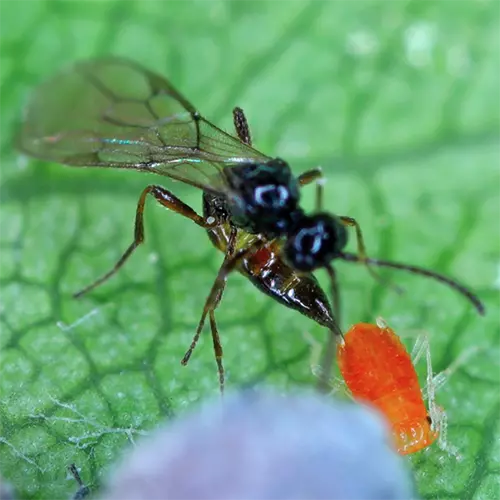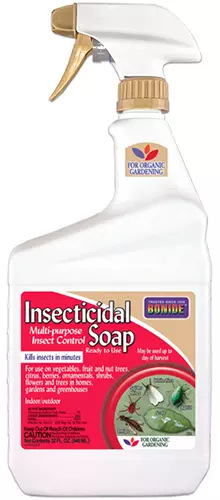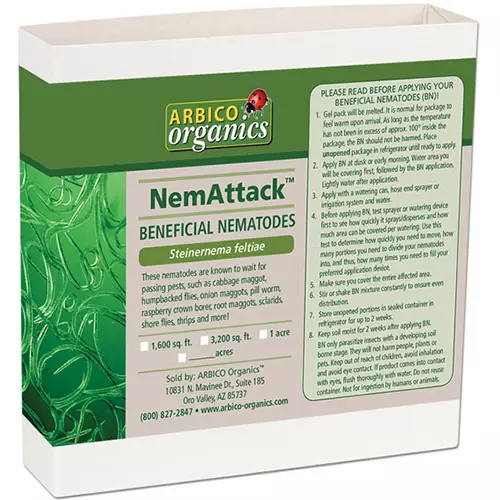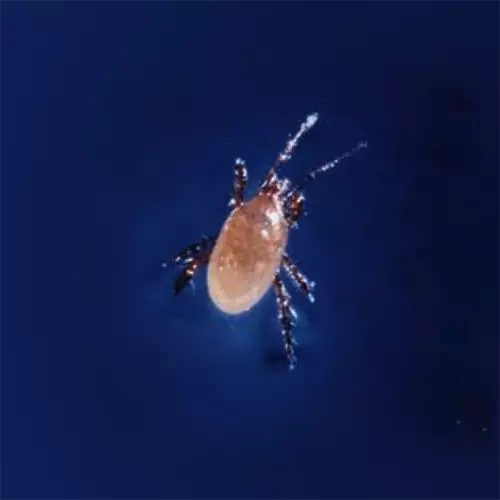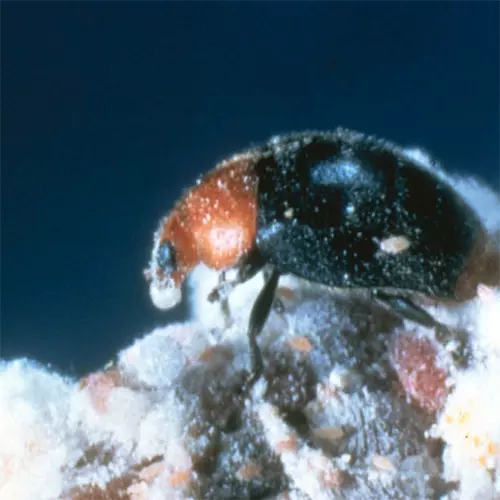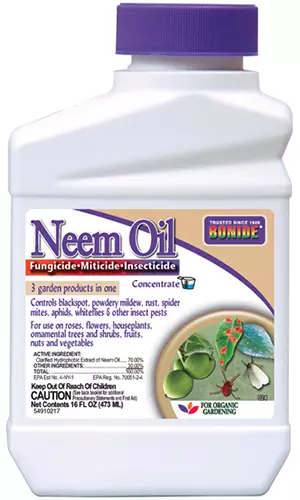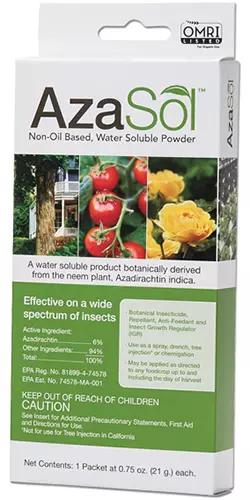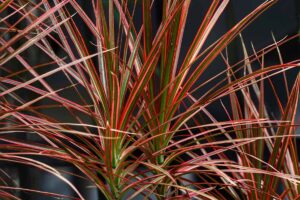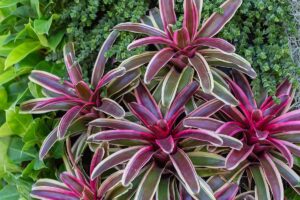The crimson anthurium I bought for my mom was the only plant I took home from the university greenhouse that didn’t harbor a pest ready to take advantage of her houseplant collection.
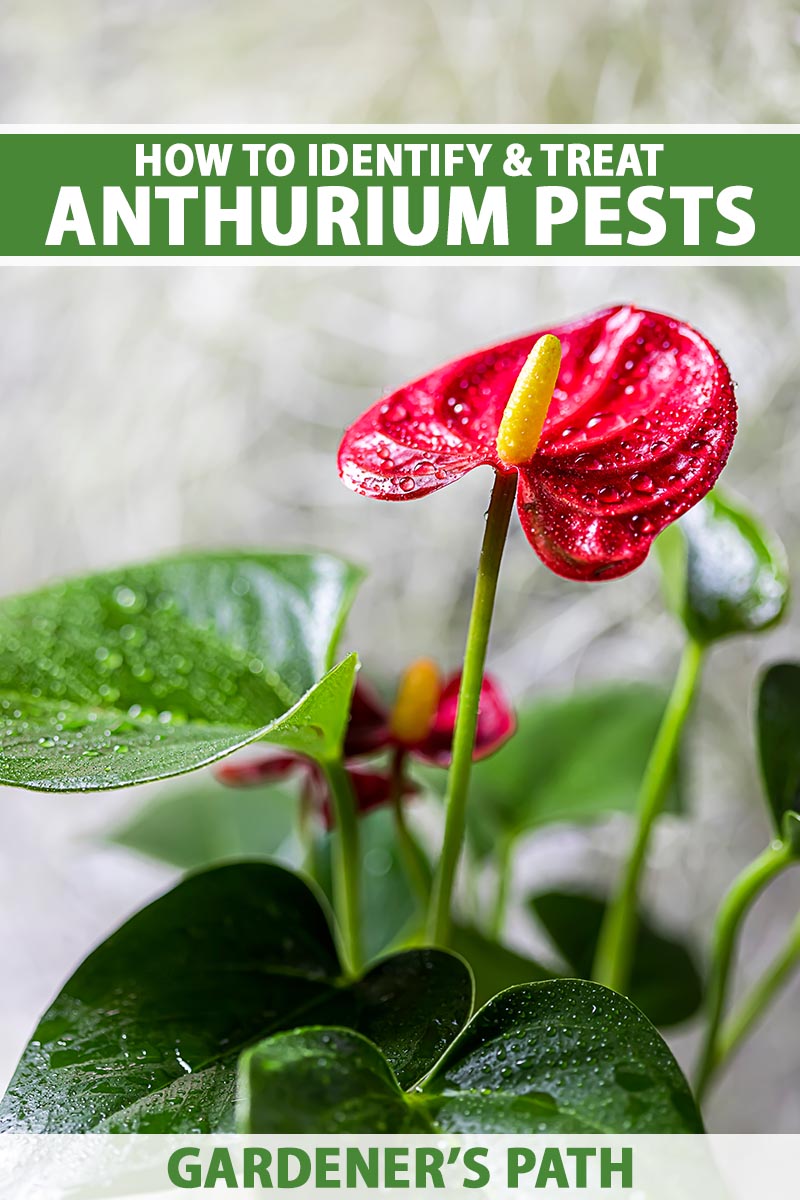
We link to vendors to help you find relevant products. If you buy from one of our links, we may earn a commission.
We won’t even talk about the mealybugs I accidentally introduced into the greenhouse at home…
Lucky for me, anthuriums, more colorfully known as flamingo plants, aren’t prone to many pest problems. But like all plants, they do occasionally attract a few hungry insects.
If these insects strike, you’ll be prepared to identify and deal with them with the information we’ve compiled for you below.
Here’s the lineup of common culprits you may find bugging your anthuriums:
1. Aphids
Aphids are pear-shaped, soft insects that come in a variety of green and brown shades and suck on the leaves and stems.
Not only do they suck the plant’s juices until the leaves become distorted and yellow, they exude a sticky byproduct called honeydew, which feeds ants and black sooty mold, and this is not a pretty sight.
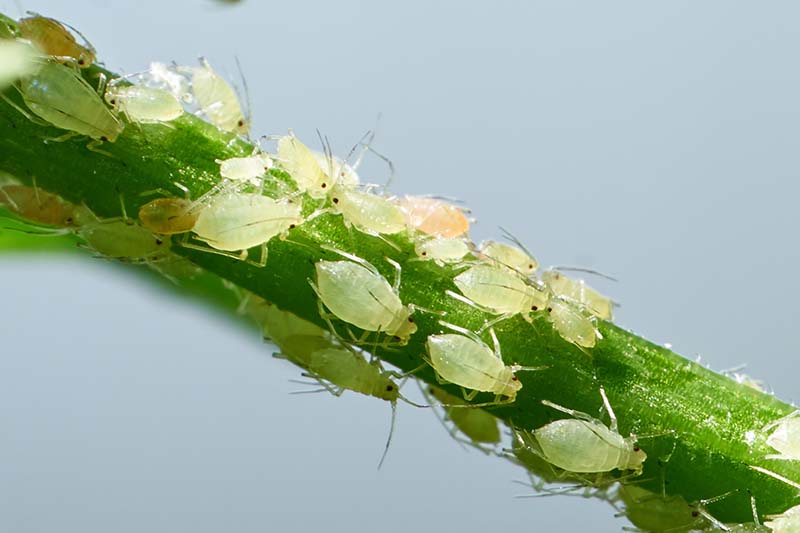
One aphid can turn into a huge problem rapidly, because these pests can reproduce without mating. They give birth to live young, which can also give birth after only seven days.
I’ll give you a second to think about the math there. Not pretty, right?
The good news is, beneficial insects like ladybugs, parasitic wasps, and lacewings all attack aphids and will help to knock down aphid populations and keep them down if growing these plants outdoors or in a greenhouse.
You can purchase green lacewing eggs at Arbico Organics.
These handy predators will target other pest insects as well, so they can be a good investment.
Certain parasitoids love to attack aphids too, laying their eggs inside the body of the pest where it develops into an adult before emerging, turning the aphid into a mummy.
A range of species are available, each with individual climate and pest population preferences. Some are better for prevention, and others are effective when introduced during the height of an infestation.
Aphidius colemani is a good choice for gardeners in warm temperatures, for example, and is available at Arbico Organics.
If your anthurium is strictly an indoor houseplant, adding more bugs into the mix might not seem like a good option, or one that’s really feasible. Luckily, insecticidal soaps can also do the trick.
Bonide Insecticidal soap works well, and it’s also available at Arbico Organics.
Make sure to spray directly on the pests and check the undersides of leaves and in crevices for hideaways.
2. Fungus Gnats
Fungus gnats, in the Sciaridae family, are tiny, delicate, long-legged flies with clear wings and dark bodies. The adults can leave black fecal spots on the plant leaves but they aren’t the real issue – the tiny, clear, legless, black-headed larvae are.
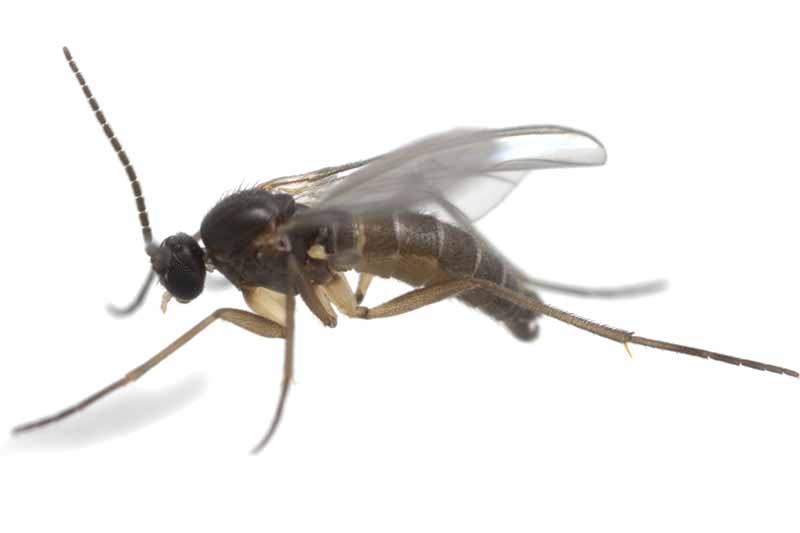
They mainly feed on decaying matter, but will begin feeding on root hairs if there are enough of them present and not enough food. This feeding causes decreased vigor and wilting, and provides pathogens with excellent entry points into the roots.
If fungus gnats are bugging your beauties, you’ll usually notice the flies indoors resting on the potting soil surface or the leaves, or flying against nearby windows.
They love a wet planting medium that’s rich in organic matter, so reduce watering and be sure to clean up any fallen leaves before they rot.
NemAttack Beneficial Nematodes
Beneficial nematodes applied as a drench to the soil or soilless medium can provide excellent control. Try NemAttack, available from Arbico Organics.
This product relies on Steinernema feltiae, a species of nematode that specializes in seeking out mobile pests such as fungus gnat and thrips larvae.
Stratiolaelaps scimitus is another option. These mites can be applied to the soil and will target gnat larvae and pupae.
They are available at Arbico Organics.
Rove beetles are another predator also available at Arbico Organics, and these shiny black insects can be introduced to the medium as well.
3. Mealybugs
Several species of mealybugs will attack anthuriums, including the citrus mealybugs (Planococcus citri), for one.
Mealybugs in general are small, soft, gray to white, wax-covered insects often sporting filaments on their sides, and sometimes two or three long tails trail behind them.
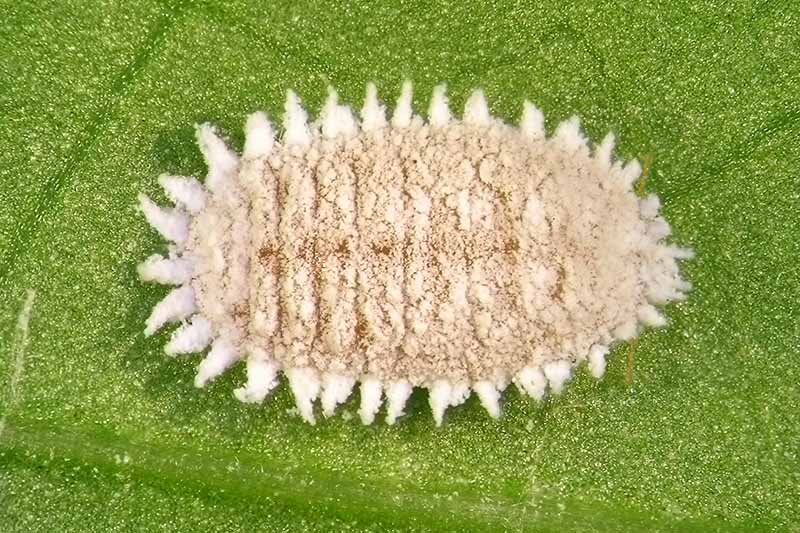
They suck the color and vigor from the leaves and exude honeydew just like aphids.
They particularly like to cluster on leaf veins and in plant crevices.
The mealybug destroyer, Cryptolaemus montrouzieri, available at Arbico Organics, is an efficient mealybug gobbler. Green lacewings will also attack mealybugs.
Because they are protected by that waxy covering, mealybugs are hard to control with sprays. If you opt to use insecticidal soaps or oils, which can also be effective, make sure you apply the product directly on the mealybugs themselves.
4. Mites
Mites are not technically insects, but rather, tiny, eight-legged creatures that suck the sap from the leaves and flowers, leaving light-colored stipples in their wake.
Severely damaged foliage often looks silvered or bronzed, and sometimes these spider-like arachnids spin fine webs.
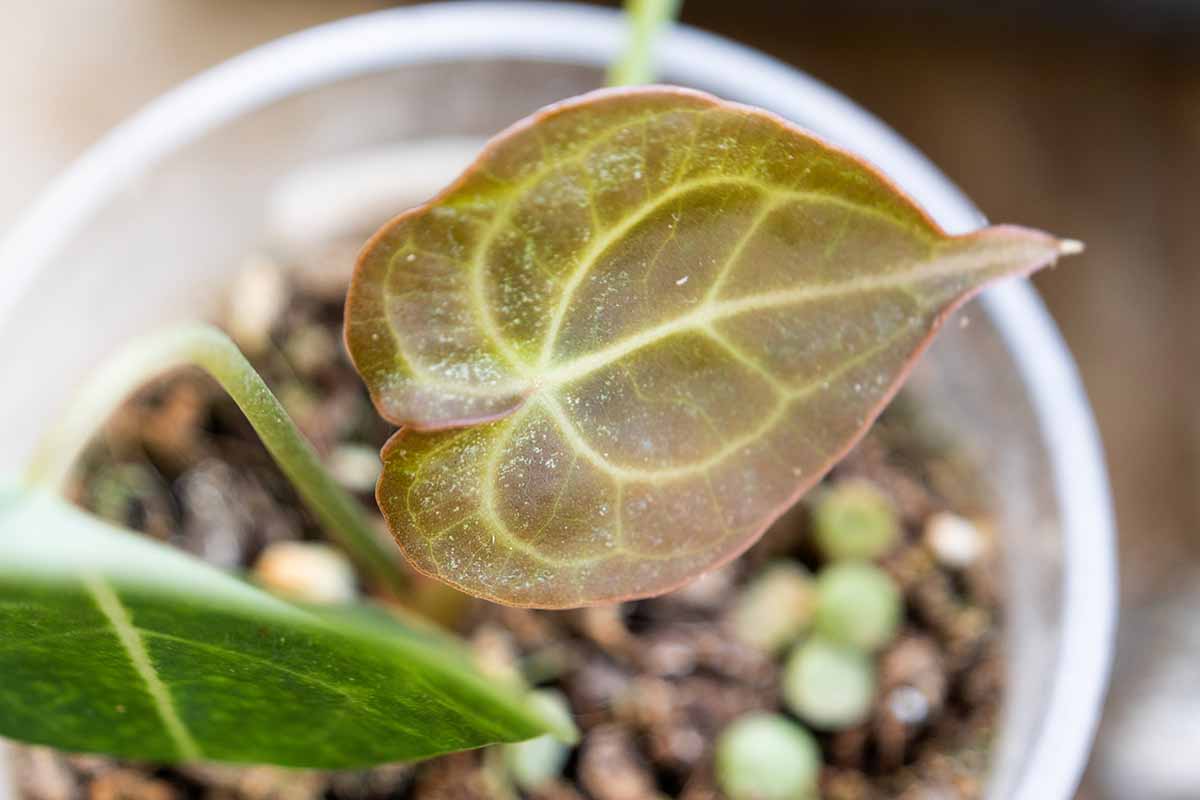
Tetranychus urticae, the two-spotted spider mite, is most common. It has a light tan to green body and two dark spots.
There are a variety of predators available to quash an infestation, including several predatory mite species such as those in the Amblyseius genus. Each species has its own ideal working conditions.
For example, A. fallacis can survive when prey populations are low, and likes low humidity and warm temperatures, so it is useful to apply as a preventative measure during the summer.
The type you choose should depend on pest populations and your local climate and weather conditions.
Insecticidal soaps and oils can be effective against infestations. If your anthurium is grown indoors as a houseplant, sprays may be a better choice than applying predatory mites. Applications should be thorough and may need repeating to achieve control.
Pyrethroids or organophosphates are also effective, but most of these harsher pesticides are not the best choice for indoor treatments.
5. Scale
Flat, oval-shaped, and found in various colors that often blend in with the plant, scale insects can be difficult to spot.
They like to hang out on the leaves and stems, and suck on plants like aphids and mealybugs do. They don’t move much, or at all. And if there are enough of them, your plant can become stunted, lose vigor and become weak, and may eventually die.
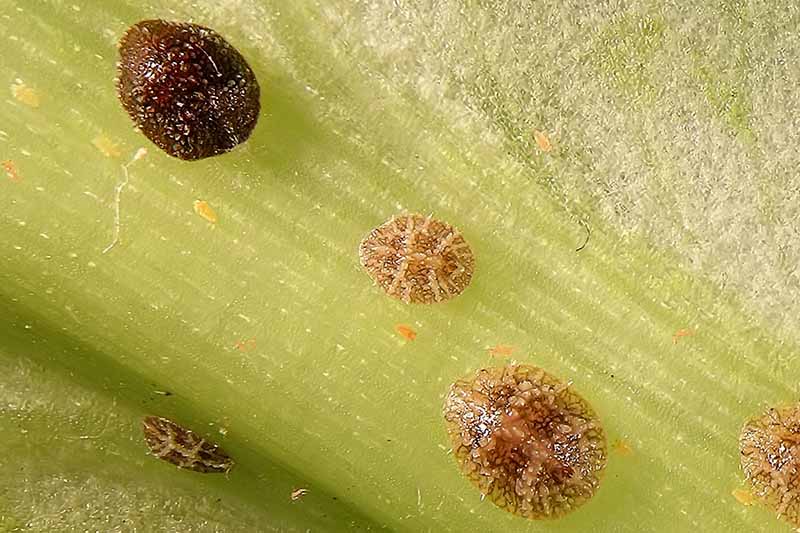
If you notice these insects on your plant, treat them with an insecticidal soap or oil. Ensure good coverage and keep up with repeat applications as needed, following package direction.
Something to keep in mind: these insects are well protected under their waxy coverings, and it can be hard to kill them with contact sprays. Systemic insecticides may be most effective as the insects will ingest them as they feed.
6. Thrips
Thrips are tiny, bullet-shaped insects in shades of light tan to black. They have four fringed wings but can’t fly very well. Large thrips populations can leave ugly scars on the flowers and leaves of anthurium plants.
Several species will attack anthuriums, including anthurium (Chaetanaphothrips orchidii), palm (Parthenothrips dracaenae), western flower (Frankliniella occidentalis), and tobacco thrips (F. fusca).
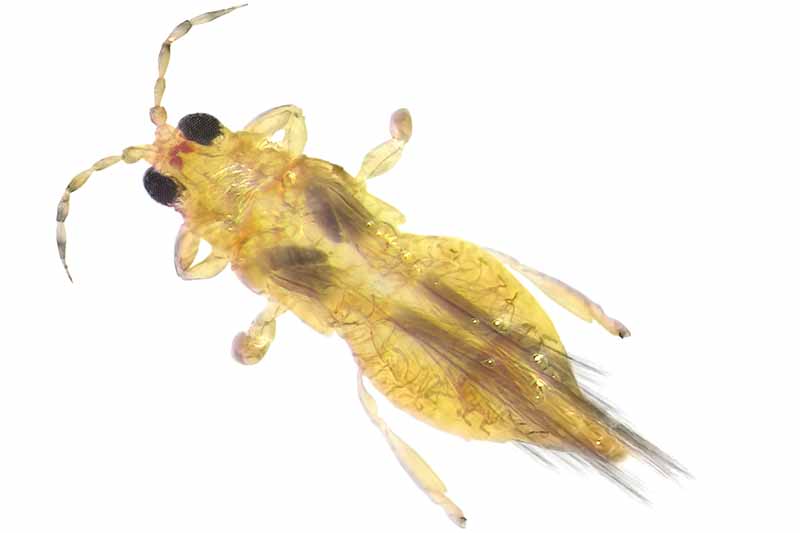
Unless you are an expert and have access to a microscope, you probably won’t be able to identify the individual species. Luckily, management is similar across species.
Thrips pupate in the soil, so one of the easiest ways to control them is by applying Sf beneficial nematodes, as described above, to the soil or potting medium.
S. scimitus mites, also used for treating fungus gnats, can be applied to knock down populations of thrips in the soil as well.
Both nematodes and predatory mites are suitable for outdoor as well as indoor use, since they hide out on and in the soil, and won’t be flying around your house and landing on unsuspecting guests like other beneficial insects might.
Neem oil and azadirachtin can both be applied to help deal with a thrips issue.
Bottles of ready-to-use or concentrated neem oil that will need to be diluted are available from Bonide and can be purchased from Arbico Organics.
AzaSol Broad Spectrum Insecticide
AzaSol Broad Spectrum Insecticide with active ingredient azadirachtin, derived from the neem tree, can also be purchased from Arbico Organics.
This is a powder that must be mixed with water according to package directions to create a spray for application.
Good coverage with either of these is important. Plus, thrips are most active in the morning and evening.
It’s best to take advantage of this, because they tuck themselves into tight crevices and are hard to reach with sprays at other times.
Flawless Flamingo Flowers
While the list of pests that could attack your plants may seem intimidating, the two most common anthurium pests – aphids and thrips – aren’t actually all that common, especially on anthuriums grown as houseplants.
So, you can relax a little.
But wait, not too much! Keep an eye on your plant nonetheless. Most of these insects are so tiny they can be hard to notice until infestations become a huge problem.
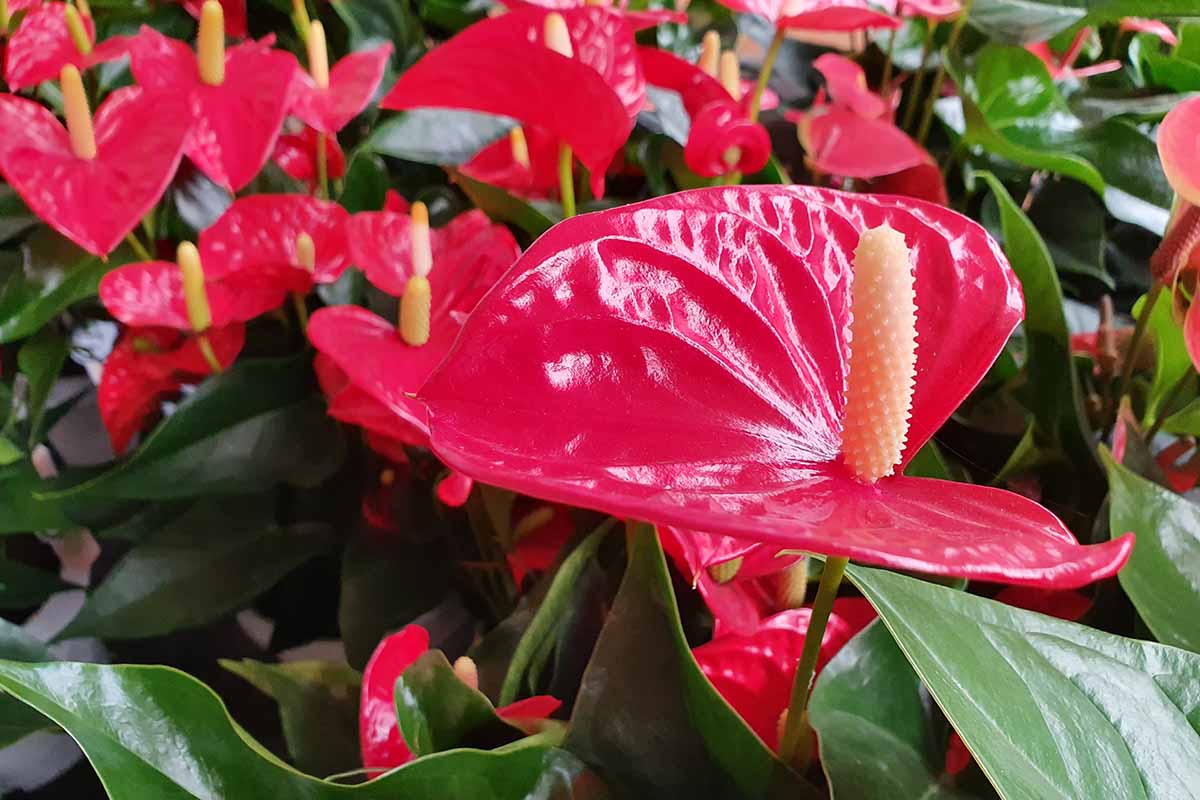
Since these glossy-leafed plants need regular dusting to keep them looking fresh and beautiful anyway, take that opportunity to inspect thoroughly while you’re cleaning and remove any pest insects you see.
This will go a long way in keeping your anthuriums as eye-catching as ever!
Do you have an anthurium plant? Has it ever been attacked by pests? Tell us about it in the comments below!
In the meantime, learn more about caring for anthuriums in these guides:

